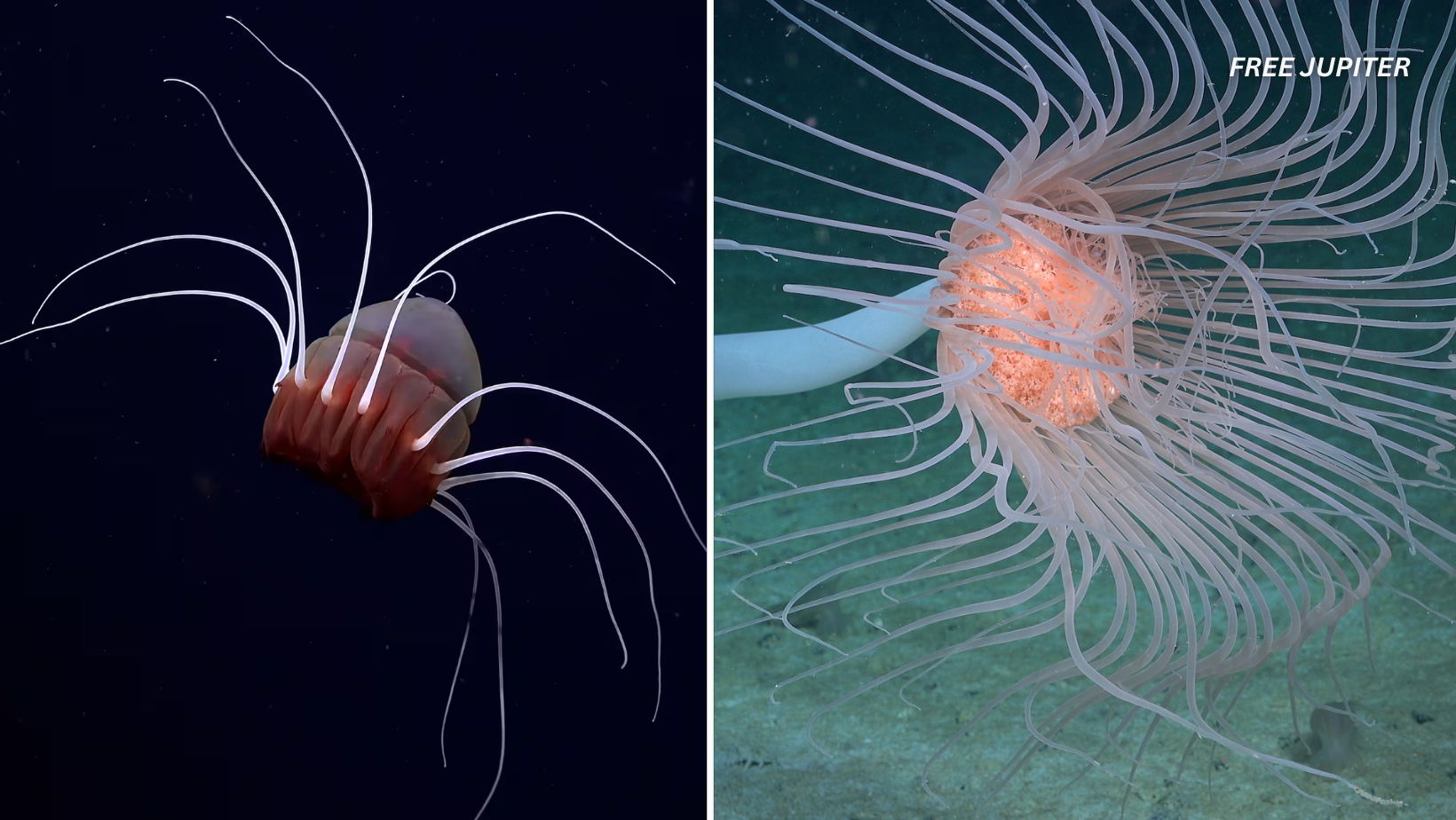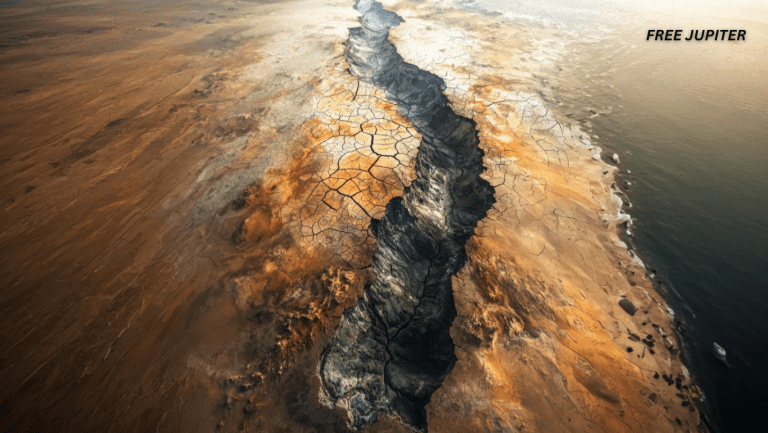Earlier this year, an enormous iceberg, stretching 19 miles in length, detached from Antarctica’s ice sheet in a striking display of natural forces. The dramatic event not only reshaped the icy landscape but also unlocked a hidden world beneath the ice—one teeming with unexpected life forms.
The breaking away of icebergs is not uncommon in Antarctica, where the shifting climate and natural ice flow cycles contribute to periodic calving events. However, the scale of this particular detachment made it a significant occurrence. Scientists monitoring the region have long observed how the thinning ice shelves signal broader changes in the environment. With rising global temperatures, these icebergs are calving at an increasing rate, potentially exposing ecosystems that have been hidden for centuries or even millennia.
A team of researchers, who happened to be in the right place at the right time, seized the rare opportunity to explore the newly exposed seafloor. As the iceberg drifted away, it unveiled an ecosystem that had remained in complete darkness, untouched by the outside world. What they discovered stunned them: an array of marine life thriving in a place that had been completely sealed off under thick ice.
A research team aboard the vessel “Falkor (too)“—yes, that is its official name, parentheses included—did not anticipate encountering much life beneath the freshly revealed seafloor. The sheer force of the iceberg’s detachment suggested a barren, lifeless expanse. Yet, to their surprise, the scene below was teeming with creatures, some of which may be previously unknown to science.
According to reports, the icy depths concealed an astonishing variety of marine organisms, including various species of crustaceans, octopuses, sea snails, worms, and fish. The discovery underscores the remarkable resilience of life, persisting even in some of the harshest and most isolated environments on Earth. This unexpected biodiversity suggests that life has adapted in ways not yet fully understood, with organisms possibly relying on chemosynthesis or deep-sea currents to sustain themselves in the absence of sunlight.
Read more: People Mystified As Huge Spinning Blue Spirals Are Being Spotted In Skies Around The World
This discovery is also crucial in understanding how such ecosystems function under extreme conditions. Since these organisms had been living in isolation, their adaptations could provide insight into how life may exist in similarly harsh environments elsewhere in the universe. Scientists speculate that studying these deep-sea creatures could inform the search for life in subsurface oceans on icy moons like Europa and Enceladus.
Moreover, the event serves as a stark reminder of the rapid environmental changes occurring on our planet. With icebergs breaking off more frequently due to climate change, these once-hidden ecosystems may become more exposed, presenting both a research opportunity and a conservation challenge. Scientists are now racing to document these fragile marine habitats before they are irreversibly altered by shifting ocean conditions.
Read more: Scientists Have Discovered A Mysterious ‘Golden Orb’ at the Bottom of the Ocean
A Window into an Unseen World
Footage captured by the Schmidt Ocean Institute, which spearheaded the research efforts, showcases an incredible array of biodiversity. Among the creatures documented were spindly, tentacle-laden arthropods and striking red crustaceans. One particularly intriguing image highlights a “helmet jellyfish,” its delicate tentacles stretched outward in a mesmerizing display.
“We did not expect to find such a vibrant and thriving ecosystem,” remarked Patricia Esquete, lead scientist on the expedition and a researcher at the University of Aveiro in Portugal. “The size of these animals suggests that these communities have existed undisturbed for decades, possibly even centuries.“
The location of this ecosystem makes it especially captivating. Shrouded in darkness and isolated from direct human influence, these waters provide a rare opportunity to study life in its most undisturbed form. Additionally, the discovery carries significant implications in the context of climate change. As global temperatures rise and ice sheets continue to break apart, scientists are eager to observe how these fragile ecosystems respond to their rapidly shifting environment.
The biodiversity discovered beneath the iceberg suggests that unique adaptations have allowed these creatures to thrive in extreme conditions. Many of these organisms have evolved to survive with minimal sunlight, relying instead on nutrients carried by ocean currents or released from deep-sea geothermal vents. The presence of various filter feeders and scavengers indicates a delicate balance within this ecosystem, one that could easily be disrupted by changes in temperature or ice coverage.
Studying this hidden world also offers valuable insights into Earth’s past. These organisms may have remained largely unchanged for centuries, acting as living records of a time before modern climate disruptions. By analyzing their genetic makeup and ecological roles, scientists can better understand how marine life adapts to prolonged isolation and environmental stability.
Furthermore, these discoveries raise questions about what other life forms might exist in unexplored regions of the ocean—or even beyond our planet. The conditions found under Antarctica’s ice bear similarities to those suspected on icy moons like Europa or Enceladus, where extraterrestrial life may also rely on subsurface ecosystems for survival.
Exploration Amid Environmental Change
Following the iceberg’s separation from the George VI Ice Shelf in January, Esquete and her team promptly adjusted their research plans to investigate the newly revealed seafloor. Their swift action allowed them to collect vital specimens, though confirming whether any newly observed species are previously unclassified may take months, if not years.
“We took advantage of the moment, adapted our expedition schedule, and explored the depths to understand what was happening beneath the ice,” Esquete explained.
The detachment of icebergs from Antarctica is not an isolated event. The George VI Ice Shelf, the source of this latest calving, has been significantly impacted by climate change. A 2021 study highlighted record-breaking surface melt in the region, a stark reminder of the planet’s warming trends.
Read more: Earth’s Core Is Leaking, And Scientists Have Finally Figured Out Why
As the climate crisis intensifies, such events are expected to become more frequent, drastically altering Antarctica’s landscape and affecting the ecosystems hidden beneath. Scientists are keen to determine how organisms in these isolated environments cope with sudden exposure to new conditions, including changes in temperature, salinity, and available nutrients. By studying these newly revealed habitats, researchers hope to gain insights into how life adapts to extreme transformations—knowledge that may even be applicable to other planetary bodies where life might exist in similarly harsh conditions.
These findings also emphasize the urgency of continued climate research. Understanding the long-term impact of ice shelf collapses on marine biodiversity is crucial for developing conservation strategies. The team’s research will contribute to a broader effort to predict the future of polar ecosystems in an era of rapid environmental change.
As scientists continue their work, the discoveries made beneath this iceberg serve as a powerful testament to nature’s resilience and the urgent need for further research. Understanding these hidden ecosystems may offer critical insights into the broader consequences of climate shifts, providing a glimpse into the unknown worlds that exist just beneath the ice.










